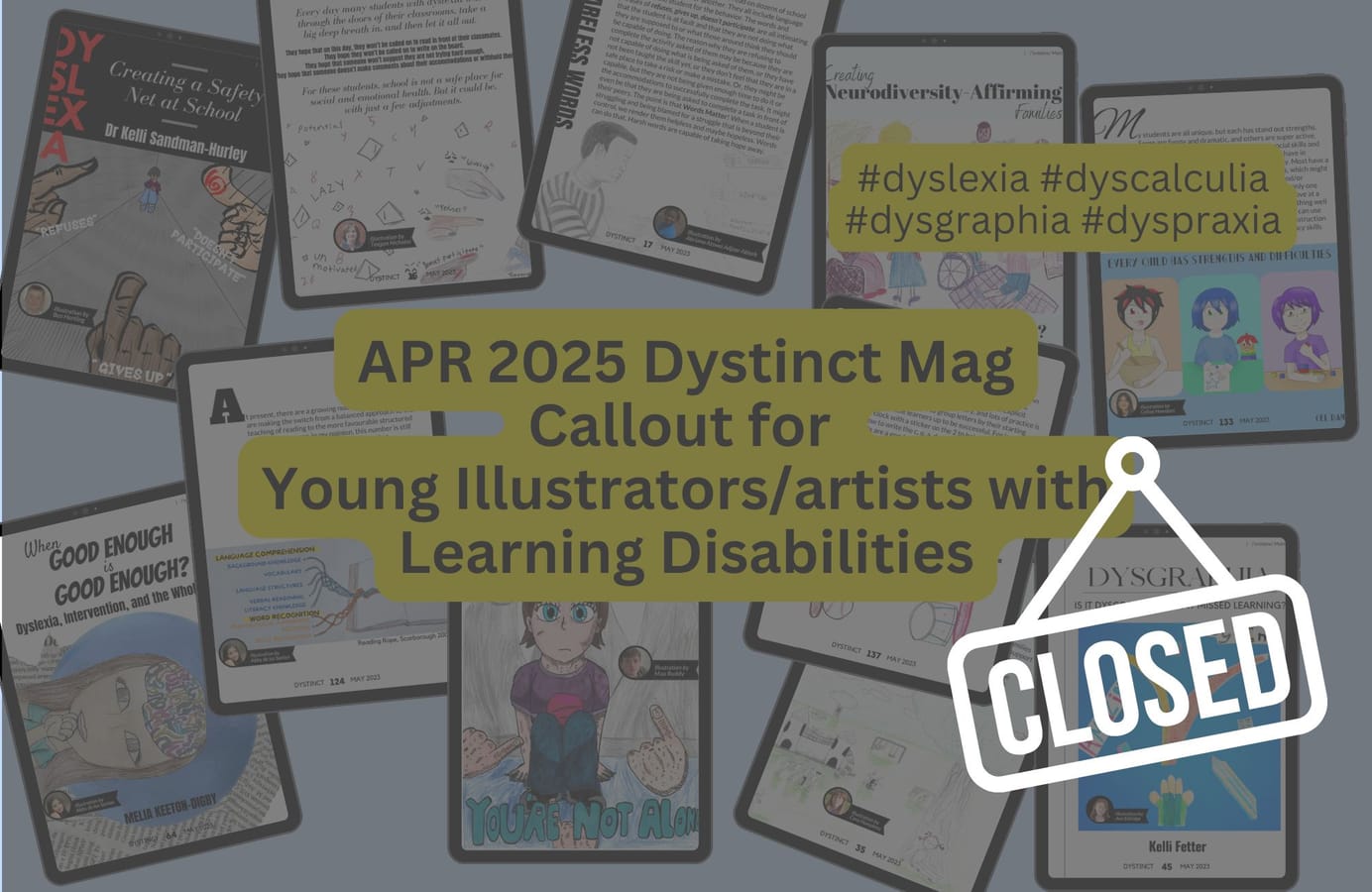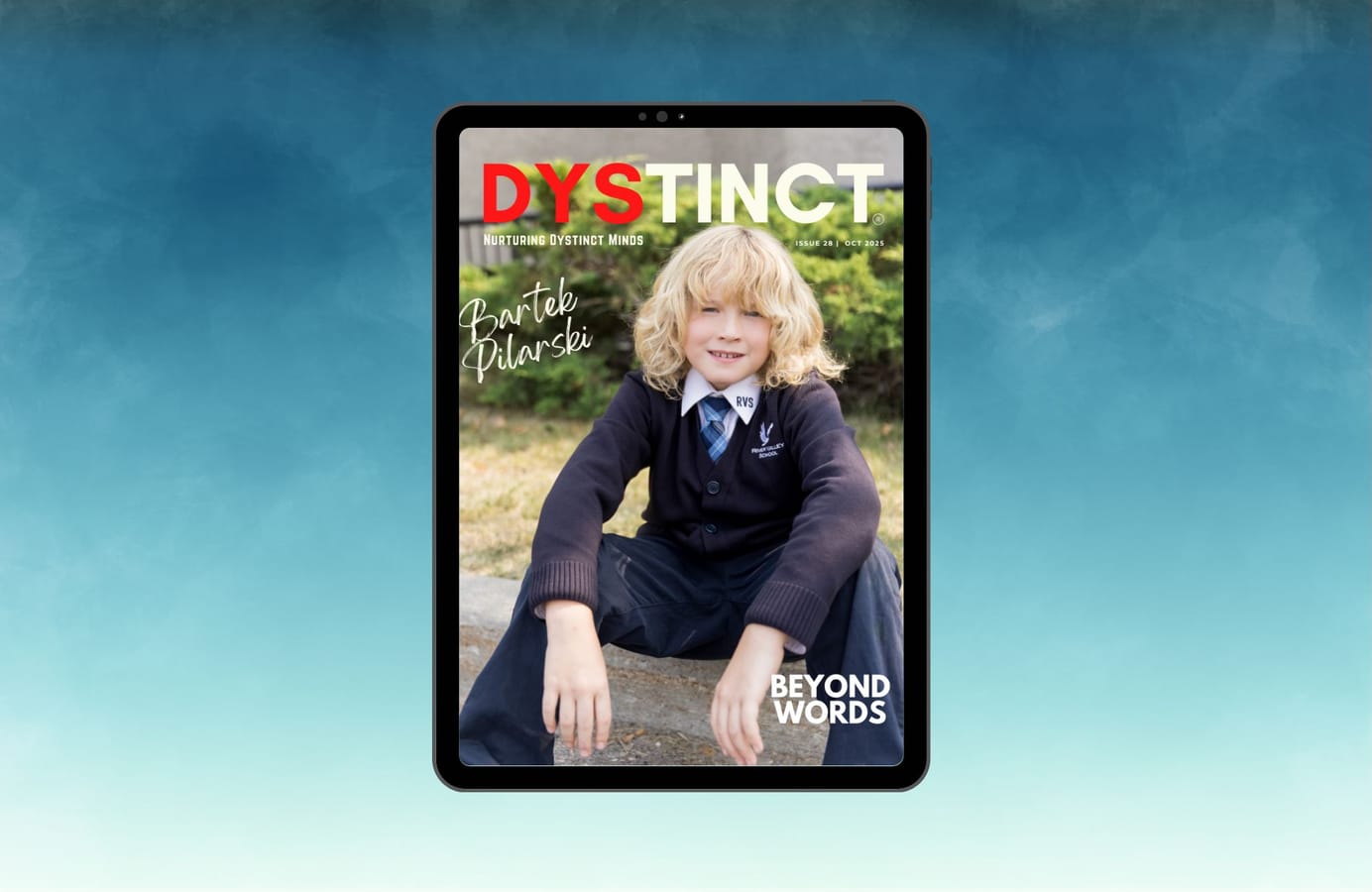
Issue 26: Illustration Callout for Apr 2025 Dystinct Magazine
Opportunity for children to get their illustrations published in the Dystinct Magazine. In every magazine issue, articles written by specialists are accompanied by illustrations created by children. Submit your child's illustrations for a chance to be featured in the Dystinct Magazine.
Table of Contents
Callouts for illustrations to be featured in the upcoming Apr 2025 issue of the Dystinct Magazine
Instructions to submit the illustrations are at the bottom. If you have any questions, please get in touch with me at hello@dystinct.org.
Callout 1 - Guessing is not reading
- Article Topic: Debunking Three-Cueing: What I Got Wrong About Teaching Reading
- Article Context: Anna Geiger, the founder of The Measured Mom, reflects on how she once relied on the widely accepted but flawed three-cueing model to teach reading, until she discovered it was not grounded in research; she shares the evidence that debunks three-cueing and offers practical guidance on what to do instead to help children become successful readers.
Illustration Guideline:
Children can feel free to create an illustration as per their creativity.
If you require a guideline, please draw a scene with two kids reading the same predictable book with pictures accompanying the sentences. One child is pointing at a word and confidently saying the wrong word by looking at the picture, while the other child is quietly sounding out the word by using the letters. This shows the difference between guessing and real reading.
Callout 2 - The brain machine- understanding how we learn
- Article Topic: Dyslexic Thinkers - Testament of Time - The Reasons Dyslexics (and some Neurodivergent) Need Additional Time
- Article Context: Georgie Cooney, dyslexia specialist, explains why additional time is essential for dyslexic and neurodivergent learners, whose processing differences require more time to read, write, and spell—emphasising that with this support, they can thrive, reach their potential, and avoid the long-term consequences of being misunderstood in a fast-paced world.
Illustration Guideline:
Children can feel free to create an illustration as per their creativity.
If you require a guideline, please draw a picture of the brain as a machine inside someone’s head. Show how information from the senses (like eyes, ears, hands, etc.) goes into the machine. Inside, you can draw buttons, wheels, or pipes to show how the brain works to think and learn. At the end of the machine, you could show the person doing something like writing, talking, or reading. You could also show what happens when the brain machine needs more time to work properly.
Callout 3 - Universal screening and literacy assessment
- Article Topic: Universal Screening: A Temperature Check and Essential First Step in a Systematic Approach to Literacy Assessment
- Article Context: Dr. Shelby Pollitt outlines how universal screening serves as a crucial first step in identifying students at risk for literacy difficulties, enabling early intervention and more equitable access to support, while stressing the importance of ongoing assessment to guide effective instruction.
Illustration Guideline:
Children can feel free to create an illustration as per their creativity.
If you require guideline, you can choose to draw a picture based on one of the ideas below:
- The Literacy Check-Up Machine
Draw a fun machine—or even a friendly doctor character—that gives kids a "reading check-up," just like a real doctor might check your temperature or blood pressure. The machine might have a scanner for letters, dials for decoding, and lights that flash when something needs more practice. - Early Help = Head Start
Draw a race between two kids. One child got reading help early (through universal screening) and is running confidently toward the finish line with a big smile. The other child started getting help a little later but is working hard and catching up. You can add books, pencils, or helpful teachers along the path, and signs or speech bubbles that say things like “You can do it!” or “I love reading now!”
Callout 4 - Exploring school options
- Article Topic: Choosing a school for students with learning differences
- Article Context: Libby Taylor guides parents through the school selection process, emphasizing that the best choice for students—especially those with learning differences—is one that fits their unique needs, learning style, and family values.
Illustration Guideline:
Children can feel free to create an illustration as per their creativity.
If you require a guideline, you can choose to draw a picture based on one of the ideas below:
- School Map
Create a school map or adventure trail with signposts pointing to different kinds of schools. A child (or family) is choosing a path, with a backpack of “family values,” “learning style,” and “goals.” - Different types of schools:
Draw different types of schools—a big school, a small one, one with a garden, one with computers, one with a playground—and kids smiling as they find the one that fits them best. Each child might say something like “This one feels right!” or “I can learn here!”
Callout 5 - Talking Helps Students Learn
- Article Topic: Oral Language: Speaking and Listening in The Secondary Classroom
- Article Context: Jeanne Schopf shares insights adapted from the upcoming book The Science of Secondary Literary: Research to Practice from the Voices of the Field, Spring 2026 emphasizing the powerful role of structured, student-led discussions in strengthening literacy development for secondary students.
Illustration Guideline:
Children can feel free to create an illustration as per their creativity.
If you require a guideline, you can choose to draw a picture based on one of the ideas below:
- Talking builds thinking:
Draw a classroom where students are sitting in a circle, talking to each other while books float around them. Show how speaking and listening can help ideas "click" or “light up” in their minds. - Discussion grows ideas:
Draw students planting “idea seeds” during a discussion, with words like “questions,” “evidence,” and “opinions” written on the pots. Their ideas are growing into strong plants, symbolizing learning.
INSTRUCTIONS
Instructions for creating illustrations:
- If your child can create digital drawings, that would be preferred. If not, illustrations on paper will suffice. (If your child can create a digital illustration, please let me know about the software/platform they will use to create the file).
- Please create/draw/colour on an A4 sheet of WHITE paper.
- Scan the image and send us a clear image of the illustration without shadows. Please do not take a photograph using flash on your mobile device.
Instructions for submitting your illustrations:
Please email me your submissions to hello@dystinct.org with the following info:
- Short bio- 25-50 words
- Name of Child
- Age
- Location (City/Country)
- Diagnosis/suspected diagnosis
- 1-2 high-resolution headshots/ photos of the child
Illustrations featured in the previous issue of Dystinct Magazine
The below illustrations were featured in previous issues.






